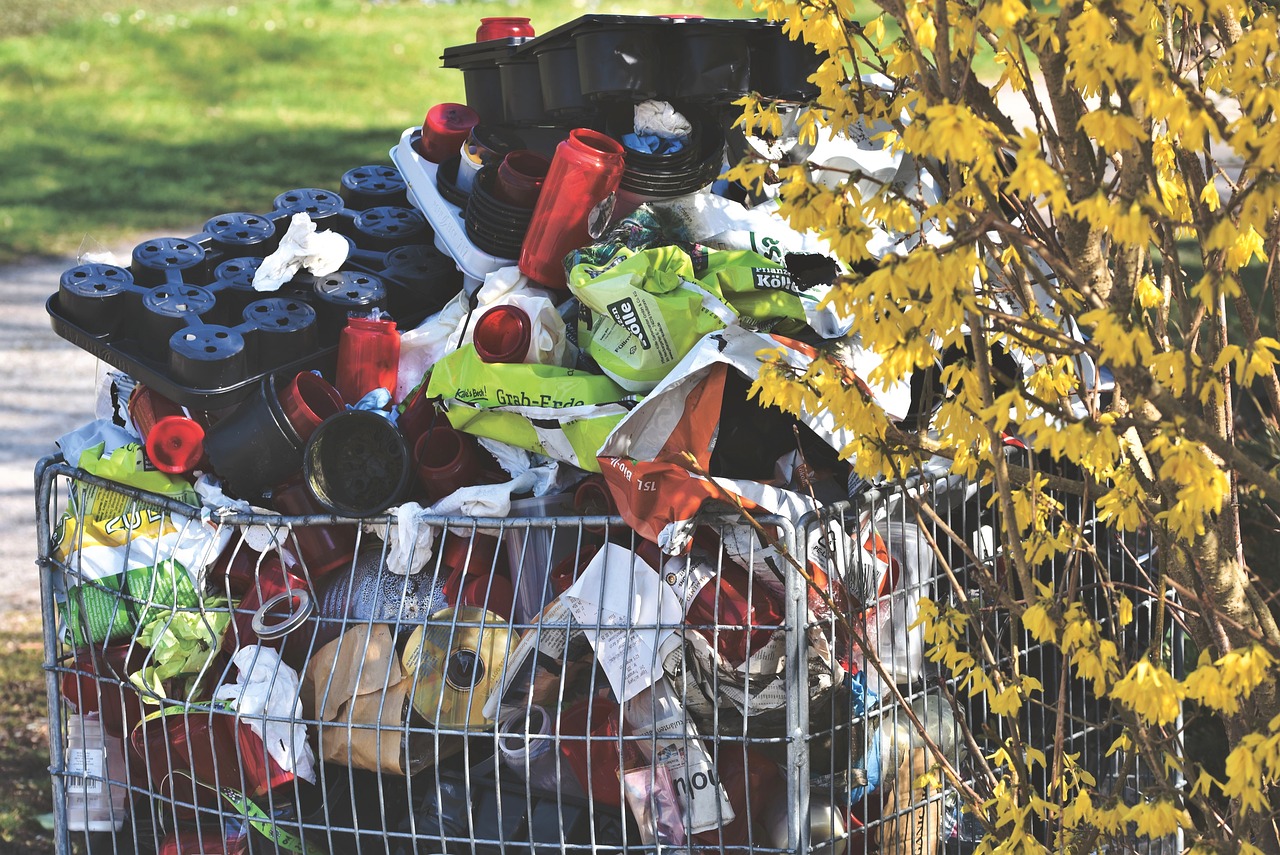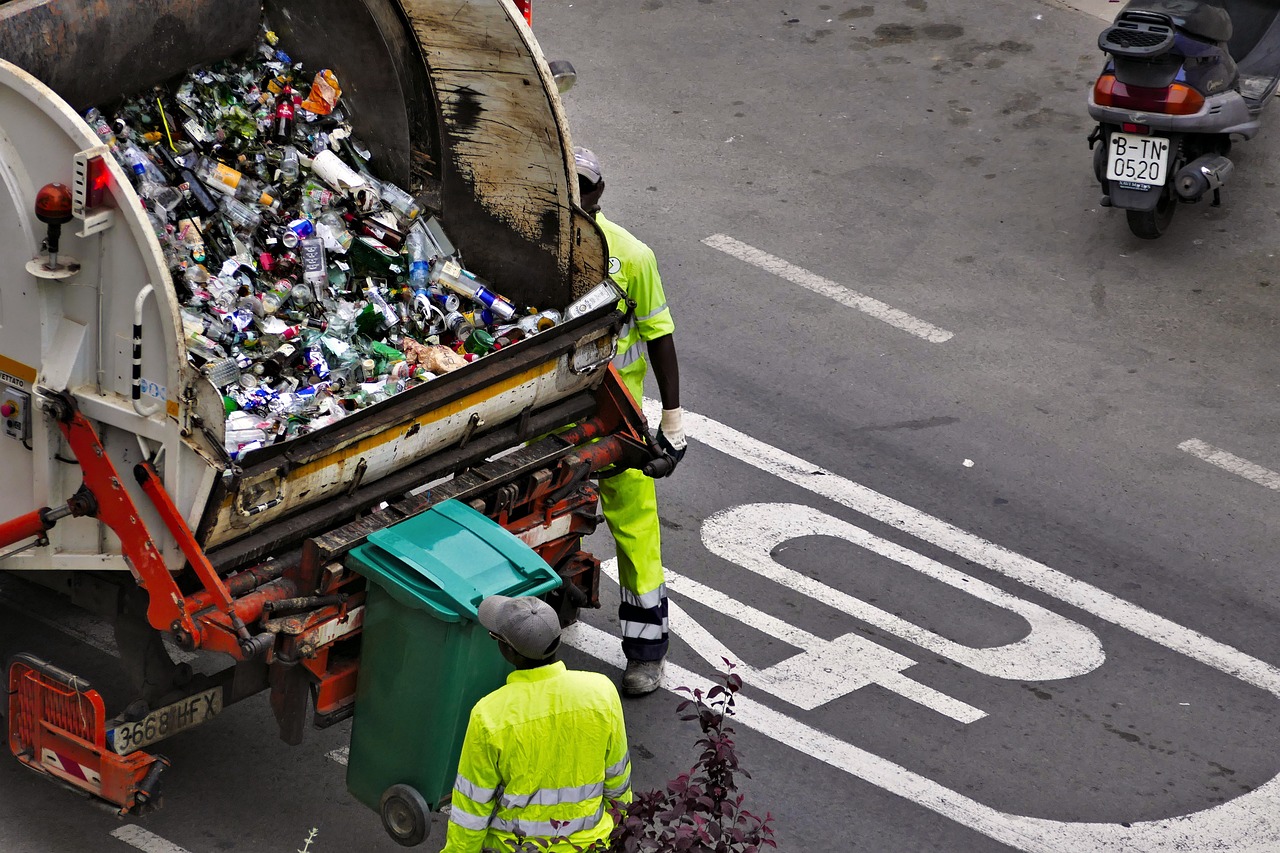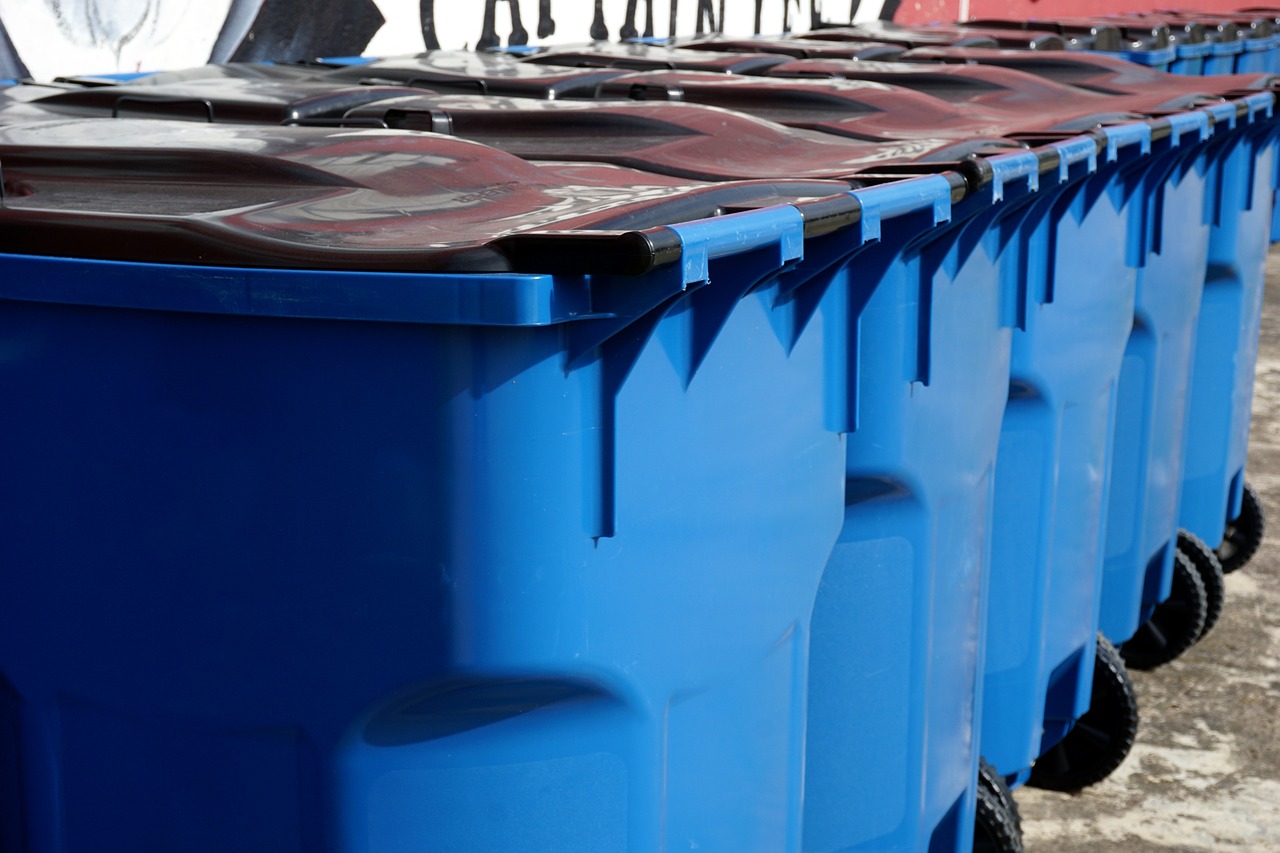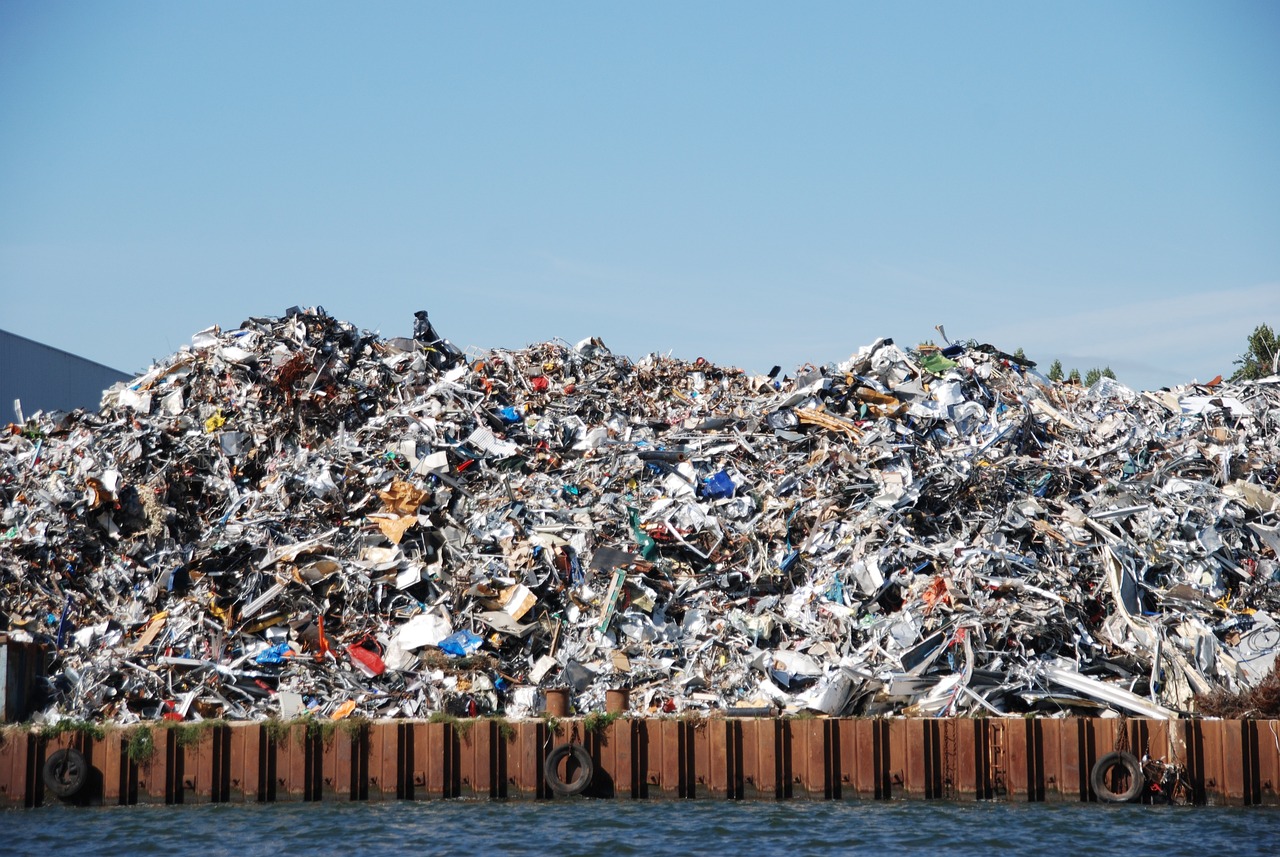The Role of Legislation in Recycling
Recycling is more than just a buzzword; it’s a critical component of sustainable living and environmental conservation. But did you ever stop to think about how laws and regulations shape our recycling habits? That’s right! Legislation plays a pivotal role in guiding how we manage waste and encouraging us to recycle more effectively. Without these legal frameworks, our efforts to protect the environment would be like trying to fill a bucket with a hole in it—no matter how hard we try, we just can't keep it full. In this article, we’ll delve into the intricate relationship between legislation and recycling practices, exploring how laws not only promote sustainability but also foster responsible waste management.
Imagine a world where every piece of plastic, paper, and metal finds its way back into the production cycle instead of ending up in landfills. This vision is not just a dream; it’s a tangible goal that can be achieved through effective legislation. Recycling laws serve multiple purposes:
- They establish clear guidelines for waste management.
- They create incentives for businesses and individuals to participate in recycling programs.
- They promote public awareness about the importance of recycling.
In essence, these laws act as the backbone of recycling initiatives, ensuring that we not only have the means to recycle but also the motivation to do so. For instance, countries with stringent recycling laws often see higher recycling rates, which is a testament to the effectiveness of legal frameworks in driving change. But what happens when legislation falls short? That’s where the challenges come into play, and we’ll explore those in later sections.
As we navigate through this discussion, we’ll shine a light on key legislation around the globe that has made significant strides in enhancing recycling efforts. From the European Union’s directives to the patchwork of laws in the United States, understanding these frameworks is crucial for anyone who cares about the planet. So, buckle up as we embark on this journey to uncover the vital role of legislation in recycling!

Importance of Recycling Legislation
Understanding the significance of recycling legislation is crucial for promoting sustainable practices and reducing waste. Imagine a world where every piece of plastic, paper, or glass has a second chance at life. That's precisely what effective recycling laws aim to achieve. By establishing clear guidelines and responsibilities, these laws not only facilitate recycling but also foster a culture of environmental responsibility among citizens and businesses alike.
One of the most compelling reasons for implementing recycling legislation is its role in conserving natural resources. When we recycle materials like aluminum and paper, we significantly reduce the need for virgin resources. For instance, recycling one ton of paper can save over 17 trees and 7,000 gallons of water! This conservation of resources helps to mitigate the environmental impact associated with resource extraction and processing. Moreover, by decreasing the demand for new materials, recycling legislation can lead to lower energy consumption and reduced greenhouse gas emissions.
Additionally, recycling laws can drive economic benefits. By creating a structured recycling system, governments can stimulate job creation in the recycling and waste management sectors. According to studies, recycling and reuse activities in the United States alone support over 1.1 million jobs and generate more than $236 billion in revenue annually. This economic boost not only benefits individual communities but also contributes to national economies, making a compelling case for robust recycling legislation.
Furthermore, effective recycling legislation encourages innovation and the development of new technologies. When businesses know that there are regulations in place, they are more likely to invest in advanced recycling technologies and sustainable practices. This not only enhances the efficiency of recycling processes but also opens up new markets for recycled materials. For example, companies are increasingly developing biodegradable packaging solutions as a response to stringent recycling laws. This innovation is vital for transitioning towards a circular economy, where waste is minimized, and resources are reused.
However, the success of recycling legislation hinges on public participation and awareness. Laws are only as effective as the people who follow them. Therefore, it is essential to couple legislation with educational campaigns that inform the public about the importance of recycling and how they can contribute. Public awareness initiatives can take many forms, including community workshops, school programs, and social media campaigns, all aimed at fostering a sense of responsibility and urgency regarding recycling.
In summary, the importance of recycling legislation cannot be overstated. It serves as the backbone of sustainable waste management practices, driving conservation efforts, economic growth, technological innovation, and public engagement. As we continue to face pressing environmental challenges, the role of legislation in guiding recycling practices will be more critical than ever. By supporting and strengthening these laws, we can make significant strides towards a cleaner, more sustainable future.

Key Legislation Around the World
When it comes to recycling, legislation plays a pivotal role in shaping how we manage waste and protect our environment. Across the globe, different countries have adopted unique laws that not only encourage recycling but also foster a culture of environmental responsibility. These laws serve as a framework that guides individuals, businesses, and governments in their recycling efforts. For instance, countries like Germany and Sweden have pioneered recycling initiatives that have set benchmarks for others to follow. By examining these key pieces of legislation, we can better understand how they contribute to higher recycling rates and a more sustainable future.
One of the standout examples is Germany's Packaging Act, which was introduced in 2019. This legislation mandates that all producers and distributors of packaging must register with a dual system to ensure that their products are properly recycled. The act has led to a significant increase in recycling rates, with the country boasting an impressive recycling rate of over 60%. This success can be attributed to strict regulations that hold companies accountable for the waste they generate. In a similar vein, Sweden has implemented a Waste Management Act that emphasizes waste sorting and recycling, resulting in a recycling rate that hovers around 50%.
In Asia, countries like Japan have made remarkable strides in recycling through their Home Appliance Recycling Law, which requires manufacturers to take back old appliances and recycle them. This law not only reduces waste but also encourages manufacturers to design products with recyclability in mind. The result? A win-win situation where both the environment and the economy benefit. Meanwhile, South Korea has introduced a Volume-Based Waste Fee System, which charges households based on the amount of waste they produce, thereby incentivizing recycling and reducing overall waste generation.
Across the Atlantic, the United States has a more fragmented approach to recycling legislation, with laws varying significantly from state to state. However, some states have taken the lead in implementing comprehensive recycling programs. For example, California's California Integrated Waste Management Act aims to divert 75% of waste from landfills by 2020. This ambitious goal has prompted local governments to enhance their recycling programs and engage communities in sustainable practices.
As we can see, the different legislative approaches around the world highlight the importance of tailored solutions that fit each region's specific needs and challenges. Countries that have successfully implemented recycling laws often share common themes: they promote public awareness, hold producers accountable, and provide the necessary resources for effective waste management. These key pieces of legislation not only drive recycling rates but also instill a sense of environmental stewardship among citizens.
| Country | Key Legislation | Recycling Rate |
|---|---|---|
| Germany | Packaging Act | Over 60% |
| Sweden | Waste Management Act | Around 50% |
| Japan | Home Appliance Recycling Law | N/A |
| South Korea | Volume-Based Waste Fee System | N/A |
| United States (California) | California Integrated Waste Management Act | 75% diversion goal |

European Union Directives
The European Union (EU) has been at the forefront of environmental protection, particularly when it comes to recycling and waste management. Through a series of comprehensive directives, the EU aims to harmonize recycling practices across its member states, ensuring that all countries contribute to a sustainable future. These directives are not just bureaucratic red tape; they are vital frameworks that help member states establish effective recycling systems and reduce waste effectively. Imagine each directive as a stepping stone that leads to a cleaner, greener Europe—each one designed to support and enhance recycling initiatives.
One of the most significant directives in this realm is the Waste Framework Directive. This directive lays the groundwork for waste management across the EU, setting ambitious targets for recycling and recovery. It emphasizes the importance of the waste hierarchy, which prioritizes prevention, reuse, and recycling over disposal. By adopting this framework, member states are encouraged to develop their own national strategies that align with EU goals. The directive not only sets targets but also provides tools for monitoring progress, making it easier to assess the effectiveness of recycling programs.
Another critical piece of legislation is the Packaging and Packaging Waste Directive. This directive specifically targets the issue of packaging waste, which has become a significant concern in our throwaway culture. With the rise of e-commerce and single-use packaging, this directive aims to reduce the environmental impact of packaging by promoting recycling and recovery. It sets specific targets for the recycling of different types of packaging materials, such as plastics, paper, and metals. The directive also encourages the use of reusable packaging systems, which can dramatically reduce waste generation.
To illustrate the impact of these directives, consider the following table that summarizes key elements:
| Directive | Key Objectives | Impact on Recycling |
|---|---|---|
| Waste Framework Directive | Establish waste hierarchy; set recycling targets | Encourages national strategies; improves recycling rates |
| Packaging and Packaging Waste Directive | Reduce packaging waste; promote recycling of materials | Targets for recycling rates; supports reusable systems |
These directives are vital in shaping the recycling landscape in Europe. They provide a structured approach that not only encourages recycling but also fosters a culture of sustainability. However, the effectiveness of these laws heavily relies on the commitment of member states to implement them. It's not just about having laws on paper; it's about translating them into real-world action. When countries actively engage with these directives, they can significantly enhance their recycling rates and contribute to a healthier planet.
In conclusion, EU directives play a crucial role in promoting recycling and sustainable waste management practices across Europe. They set clear guidelines and targets that not only help reduce waste but also inspire innovation and responsibility among businesses and consumers alike. As we move forward, the success of these initiatives will depend on the collective effort of all stakeholders involved. So, the next time you recycle, remember that your actions are part of a larger movement towards sustainability, driven by these important legislative frameworks.

Waste Framework Directive
The (WFD) is a cornerstone of the European Union's approach to waste management, laying down a comprehensive framework for the handling of waste across member states. Established in 2008, the directive aims to promote a circular economy by ensuring that waste is managed in a way that protects the environment and human health. But what does this really mean? Well, it’s about turning waste into a resource rather than just something to throw away. Imagine a world where every piece of waste can be transformed into something useful—this is the vision the WFD strives to achieve.
One of the key objectives of the WFD is to enhance recycling efforts across Europe. It sets legally binding targets for recycling and recovery, pushing member states to adopt more sustainable waste management practices. For instance, by 2020, EU countries were required to recycle at least 50% of their household waste. This ambitious target is not just a number; it represents a significant shift in how we view waste. It encourages communities to think critically about their consumption habits and the lifecycle of products they use.
Moreover, the directive emphasizes the importance of the waste hierarchy, which prioritizes waste prevention, preparing for reuse, recycling, and recovery, with disposal as the last resort. This hierarchy serves as a guiding principle for how waste should be managed, promoting practices that minimize environmental impact. For example, instead of just tossing out old furniture, the WFD encourages repairing or donating it, thereby extending its life and reducing waste. It’s like choosing to mend your favorite pair of jeans instead of buying a new one; it’s not just about saving money—it's about being responsible and sustainable.
Implementation of the WFD varies among member states, and this is where the real challenge lies. Each country must tailor its approach to fit its specific context, which can lead to disparities in recycling rates and practices. Some countries, like Germany and Sweden, have become pioneers in recycling, achieving impressive rates through robust policies and public engagement. Others, however, struggle to meet the directive's targets, highlighting the need for ongoing support and education.
In summary, the Waste Framework Directive is not just a set of rules; it’s a call to action for all EU member states to rethink their waste management strategies. By fostering a culture of recycling and sustainability, the WFD plays a critical role in reducing the environmental impact of waste and promoting a healthier planet for future generations.
- What is the Waste Framework Directive?
The WFD is a key piece of legislation in the EU that establishes a framework for waste management, focusing on recycling and reducing waste. - What are the main goals of the WFD?
The main goals include promoting recycling, reducing waste, and encouraging sustainable waste management practices across member states. - How does the WFD impact recycling rates?
By setting legally binding targets, the WFD encourages countries to improve their recycling efforts and develop better waste management systems.

Packaging and Packaging Waste Directive
The is a cornerstone of the European Union's efforts to manage packaging waste effectively. Established to minimize the environmental impact of packaging, this directive mandates that all member states develop systems to ensure the recovery and recycling of packaging materials. By setting ambitious recycling targets, the directive not only promotes sustainability but also encourages businesses to innovate and adopt eco-friendly practices.
One of the key objectives of the directive is to achieve a minimum recycling rate for packaging waste. For instance, the directive requires that at least 65% of all packaging waste be recycled by 2025. This target reflects a significant commitment to reducing landfill waste and promoting a circular economy where materials are reused rather than discarded. To illustrate, the following table outlines the recycling targets set by the directive:
| Year | Recycling Target |
|---|---|
| 2025 | 65% |
| 2030 | 70% |
Moreover, the directive emphasizes the importance of extended producer responsibility (EPR). This means that producers are held accountable for the entire lifecycle of their packaging, from design to disposal. By shifting the burden of waste management onto producers, the directive incentivizes them to create packaging that is easier to recycle and less harmful to the environment. Think of it as a relay race where everyone, from manufacturers to consumers, must pass the baton responsibly to ensure a sustainable outcome.
However, achieving these ambitious goals is not without its challenges. The directive requires collaboration among various stakeholders, including governments, businesses, and consumers. For instance, businesses must invest in sustainable packaging solutions, while consumers need to be educated about proper recycling practices. This collaborative effort is essential to ensure that the directive's objectives are met and that the environmental benefits are fully realized.
In conclusion, the Packaging and Packaging Waste Directive serves as a powerful tool in the EU's legislative arsenal aimed at reducing packaging waste. By setting clear recycling targets and holding producers accountable, it fosters a culture of sustainability that benefits both the environment and society as a whole. As we move toward a more sustainable future, the success of this directive will largely depend on our collective commitment to responsible packaging and recycling practices.
- What is the Packaging and Packaging Waste Directive?
This directive is a European Union legislation aimed at minimizing the environmental impact of packaging waste through recycling and recovery targets. - What are the recycling targets set by the directive?
The directive sets a target of at least 65% recycling of packaging waste by 2025 and 70% by 2030. - How does extended producer responsibility work?
Extended producer responsibility holds producers accountable for the entire lifecycle of their packaging, encouraging them to design more sustainable products. - Why is collaboration important for the directive's success?
Collaboration among governments, businesses, and consumers is crucial to ensure that recycling practices are effective and that targets are met.

Legislation in the United States
In the United States, recycling legislation is a patchwork of federal, state, and local laws, each contributing to the broader goal of environmental sustainability. Unlike many countries that have a unified approach to recycling, the U.S. operates under a decentralized system where each state can implement its own regulations. This leads to a variety of programs, some of which are remarkably effective while others fall short of their goals. The federal government has made strides to encourage recycling through various initiatives, but the real impact often lies at the state and local levels.
One of the most significant pieces of federal legislation is the Resource Conservation and Recovery Act (RCRA), which governs the disposal of solid and hazardous waste. While it primarily focuses on waste management, it also encourages recycling by promoting the recovery of materials. The RCRA sets the groundwork for states to develop their own recycling programs, but it does not mandate specific recycling rates or practices. This lack of federal mandates means that states have the flexibility to tailor their recycling laws to meet local needs, but it also results in significant disparities across the country.
For instance, states like California and New York have implemented robust recycling programs that include comprehensive legislation aimed at reducing waste and increasing recycling rates. California's California Integrated Waste Management Act requires cities and counties to divert a certain percentage of waste from landfills, pushing them to adopt innovative recycling practices. On the other hand, states with less stringent laws may struggle to achieve similar results, often leading to lower recycling rates and increased landfill use.
Another interesting aspect of U.S. recycling legislation is the rise of extended producer responsibility (EPR) laws. These laws hold manufacturers accountable for the end-of-life management of their products, encouraging them to design for recyclability. States such as Maine and Vermont have taken the lead in implementing EPR laws, particularly for products like electronics and packaging. These initiatives not only promote recycling but also foster a culture of sustainability by incentivizing manufacturers to reduce waste at the source.
Despite these positive developments, several challenges remain in the U.S. recycling landscape. For example, the lack of standardized recycling guidelines can confuse consumers, leading to contamination in recycling streams. Contamination occurs when non-recyclable materials are mixed with recyclables, making entire batches of material unsuitable for processing. This issue underscores the need for better public education and outreach regarding what can and cannot be recycled.
Moreover, funding plays a crucial role in the success of recycling programs. Many local governments face budget constraints that hinder their ability to implement effective recycling initiatives. Without adequate resources, communities may struggle to provide the necessary infrastructure, such as recycling bins and collection services, further complicating efforts to boost recycling rates.
In summary, while legislation in the United States has made significant strides in promoting recycling and sustainability, the effectiveness of these laws varies widely. The decentralized nature of recycling legislation means that while some states lead the way with innovative programs, others lag behind. To truly enhance recycling efforts across the nation, it is essential to address the challenges of public awareness, funding, and the need for standardized guidelines. Only then can the U.S. hope to create a more sustainable future through effective recycling practices.

Challenges in Implementing Recycling Laws
Implementing recycling laws can feel like trying to solve a complex puzzle with missing pieces. While the intention behind these laws is to promote sustainability and responsible waste management, several challenges often stand in the way of their success. One of the most significant hurdles is the lack of public awareness. Many individuals are simply unaware of what can be recycled, how to properly separate their waste, or even why recycling is essential. This lack of knowledge can lead to low participation rates in recycling programs, ultimately undermining the very laws designed to encourage these practices.
Furthermore, the effectiveness of recycling legislation is often hampered by funding and resource constraints. Many local governments struggle with tight budgets, which can limit their ability to implement and maintain recycling programs. Without adequate funding, municipalities may not have the resources to provide necessary facilities, such as recycling bins, or to conduct educational campaigns that inform the public about recycling practices. This creates a vicious cycle: without proper resources, recycling initiatives falter, leading to a lack of awareness, and thus, perpetuating the cycle of wastefulness.
Another challenge is the inconsistency of recycling laws across different regions. In many countries, recycling regulations can vary significantly from one state or municipality to another. This inconsistency can confuse residents, making it difficult for them to understand what is expected of them. Imagine moving from one city to another and realizing that the recycling rules have changed completely—what was once recyclable might now end up in the landfill. Such discrepancies not only create confusion but also diminish the overall effectiveness of recycling efforts.
Moreover, the infrastructure required for effective recycling can be lacking, particularly in rural areas. Many regions do not have the necessary facilities to process recyclable materials, which can lead to a significant amount of waste being sent to landfills instead of being recycled. This issue is compounded by the fact that recycling markets can be volatile; when the demand for recycled materials decreases, it can lead to a drop in recycling efforts as well.
Lastly, the attitude towards recycling can also pose a challenge. In some communities, there may be a perception that recycling is inconvenient or that it does not make a significant difference in the grand scheme of things. This mindset can be difficult to change, but it highlights the critical need for ongoing education and outreach efforts. By fostering a culture that values recycling and understands its importance, communities can overcome these challenges and create a more sustainable future.
In conclusion, while recycling laws are essential for promoting environmental sustainability, their implementation is fraught with challenges that must be addressed. From public awareness to funding constraints and infrastructure issues, tackling these obstacles requires a concerted effort from governments, communities, and individuals alike.
- What is the most significant challenge in recycling? The most significant challenge is often the lack of public awareness regarding what can be recycled and how to do it properly.
- How can communities improve recycling participation? Communities can improve participation by conducting educational campaigns that inform residents about the importance of recycling and how to recycle correctly.
- Why do recycling laws vary by region? Recycling laws vary by region due to differences in local regulations, available resources, and public attitudes towards recycling.
- What role does funding play in recycling initiatives? Adequate funding is crucial for developing and maintaining recycling programs, including providing necessary facilities and conducting outreach efforts.

Lack of Public Awareness
The success of recycling laws hinges significantly on the level of public awareness. Imagine trying to play a game without knowing the rules; that’s what it’s like for communities attempting to engage in recycling programs without proper education and understanding. Many people simply don’t know what can be recycled, how to prepare materials for recycling, or even the benefits that recycling brings to the environment. This lack of knowledge can lead to a low participation rate, which ultimately undermines the effectiveness of recycling initiatives.
Furthermore, the confusion surrounding recycling guidelines often results in contamination of recyclable materials. When individuals toss non-recyclable items into the recycling bin, it can spoil entire batches of recyclables, leading to increased costs and decreased efficiency in recycling processes. This situation not only frustrates local waste management authorities but also diminishes the overall impact of recycling efforts. To combat this issue, it’s essential to implement widespread educational campaigns that inform the public about the importance of recycling and how to do it correctly.
Education should not be limited to adults; it’s equally important to engage younger generations. Schools can play a pivotal role in fostering a culture of sustainability and responsibility. By integrating recycling education into school curriculums, children can learn the significance of recycling from an early age, making them more likely to practice it as adults. Community workshops, seminars, and social media campaigns can also serve as effective platforms for spreading awareness. Here are some strategies that can be employed:
- Workshops and Seminars: Organizing local events to educate residents about recycling practices.
- Social Media Campaigns: Utilizing platforms like Facebook and Instagram to reach a broader audience with engaging content.
- School Programs: Implementing recycling education in schools to instill good habits in children.
In conclusion, without a solid understanding of recycling practices, even the best legislation can fall flat. It’s crucial for governments and organizations to prioritize public awareness initiatives to ensure that recycling laws achieve their intended goals. By fostering a well-informed community, we can not only enhance recycling rates but also cultivate a culture of sustainability that benefits everyone.
- What is the most effective way to educate the public about recycling?
Engaging workshops, social media campaigns, and school programs are all effective methods to educate the public. - Why is public awareness important for recycling?
Public awareness ensures proper participation in recycling programs, reducing contamination and enhancing efficiency. - How can schools contribute to recycling education?
Schools can implement recycling programs and integrate sustainability topics into their curriculums, shaping responsible future citizens.

Funding and Resources
When it comes to implementing effective recycling laws, are the lifeblood that keeps these initiatives alive. Without adequate financial support, even the best-intentioned recycling legislation can fall flat. Imagine trying to build a house without bricks or mortar; that’s what it’s like trying to enforce recycling laws without the necessary backing. Governments, both local and national, often face budget constraints that limit their ability to develop and maintain comprehensive recycling programs. This scarcity of funds can lead to a lack of public recycling bins, insufficient educational campaigns, and inadequate processing facilities.
Moreover, the allocation of resources is not just about money. It also involves having the right infrastructure in place to support recycling efforts. This includes everything from collection trucks to recycling centers. For instance, a city might have a great recycling law on the books, but if they don’t have the trucks to collect recyclable materials or the facilities to process them, the law becomes meaningless. This is why it’s crucial for governments to prioritize funding for recycling initiatives as part of their broader environmental strategies.
In many cases, public-private partnerships can provide a solution to the funding dilemma. By collaborating with businesses, governments can pool resources to create more effective recycling programs. These partnerships can lead to innovative solutions, like using technology to streamline waste collection or developing new recycling methods that are cost-effective. For example, companies that produce packaging materials can invest in recycling programs to help offset the environmental impact of their products. This not only supports recycling efforts but also enhances their corporate social responsibility profile.
Additionally, grants and incentives can play a significant role in boosting recycling initiatives. Many governments offer financial incentives for businesses and communities that adopt sustainable practices. These can include tax breaks, subsidies for recycling equipment, or funding for educational programs that raise awareness about recycling. By providing these incentives, governments can encourage more participation in recycling programs, ultimately leading to higher recycling rates.
Here's a brief overview of some common sources of funding for recycling initiatives:
| Source of Funding | Description |
|---|---|
| Government Grants | Financial assistance provided by federal, state, or local governments to support recycling programs. |
| Public-Private Partnerships | Collaborative agreements between government entities and private companies to fund and manage recycling initiatives. |
| Corporate Sponsorships | Funding from businesses looking to enhance their sustainability image by supporting recycling efforts. |
| Community Fundraising | Local initiatives that raise money through events or campaigns to support recycling programs. |
Ultimately, the success of recycling legislation hinges on the availability of adequate funding and resources. It’s not just about making laws; it’s about ensuring those laws can be effectively implemented and sustained over time. Communities that invest in their recycling infrastructure and prioritize funding will see the greatest benefits, not only in terms of environmental impact but also in creating a culture of sustainability that engages citizens and businesses alike.
- Why is funding important for recycling programs?
Funding is essential for establishing and maintaining the infrastructure needed for effective recycling, including collection, processing, and public education.
- How can businesses support recycling initiatives?
Businesses can support recycling by investing in sustainable practices, participating in public-private partnerships, and providing funding for local recycling programs.
- What are some common sources of funding for recycling?
Common sources include government grants, public-private partnerships, corporate sponsorships, and community fundraising efforts.
Frequently Asked Questions
- What is the role of legislation in recycling?
Legislation plays a crucial role in shaping recycling practices. It establishes rules and guidelines that promote sustainable waste management, encouraging individuals and businesses to participate in recycling efforts. By setting clear expectations, laws help ensure that recycling is effective and widely adopted.
- Why is recycling legislation important?
Recycling legislation is important because it helps reduce waste, conserve natural resources, and protect the environment. It provides a framework that supports recycling initiatives, ensuring that communities have the necessary infrastructure and resources to recycle effectively. Without these laws, recycling rates may decline, leading to increased landfill waste.
- What are some key recycling laws around the world?
Many countries have implemented unique recycling laws that have proven successful. For instance, the European Union has directives like the Waste Framework Directive and the Packaging and Packaging Waste Directive, which aim to enhance recycling efforts across member states. In the U.S., recycling laws vary by state, with some states having robust programs that significantly increase recycling rates.
- What challenges do governments face in implementing recycling laws?
Governments encounter several challenges when implementing recycling laws, including a lack of public awareness about recycling programs. This can lead to low participation rates. Additionally, funding and resources are critical; without adequate financial support, developing and enforcing effective recycling initiatives becomes difficult.
- How can public awareness improve recycling participation?
Enhancing public awareness can significantly boost recycling participation. When people understand the benefits of recycling and how to properly recycle materials, they are more likely to engage in these practices. Educational campaigns and community outreach programs can play a vital role in informing the public about recycling laws and initiatives.
- What impact do financial constraints have on recycling programs?
Financial constraints can severely impede the development and enforcement of recycling programs. Without sufficient funding, governments may struggle to provide the necessary infrastructure, such as recycling bins and processing facilities. This can lead to reduced effectiveness of recycling initiatives and lower overall recycling rates.



















